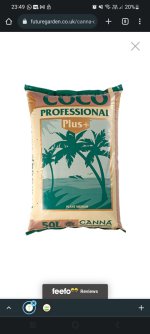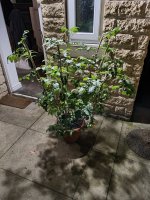No, you have to feed your plants no matter what. I feed my plants on average about every 2 weeks. But this depends on what kind of plant it is and the type of fertilizer I am using, granular or liquid.
Now I'm learning! So no matter what is in the pot I need to add fertiliser, roughly every 2 weeks depending on plant and size etc... would this include during the vegetation stage aswell?
Reason I ask is the tomato plant feed I purchased says to give it to the plant once the 2nd set of truss Start forming. Until then I only gave it water.i started the feed a couple weeks late though.
My tomato plant was purchased from a shop so they must have had it potted in some compost but when it needed transplanting I only had coco and perlite available. So I just used that and only fed it water, I also topped the plant from the top.
Now my first tomatoes I thought were small but then someone told me it's a cherry tomato plant and that's how it grows. However the last 3 weeks I noticed I was supposed to feed it twice a week if needed. Since I've done that the tomatoes are alot bigger than cherry tomatoes but not as big as normal ones.
I had alot of skin splitting on stalks and tomatoes as I was only watering every 3 days, until the water came out the bottom. I then learnt that I needed to water it everyday, so now I just give it 1.5 litre everyday, during the hot spell it was 3 litres a day considering how fast coco dries out.
This is the plant now




